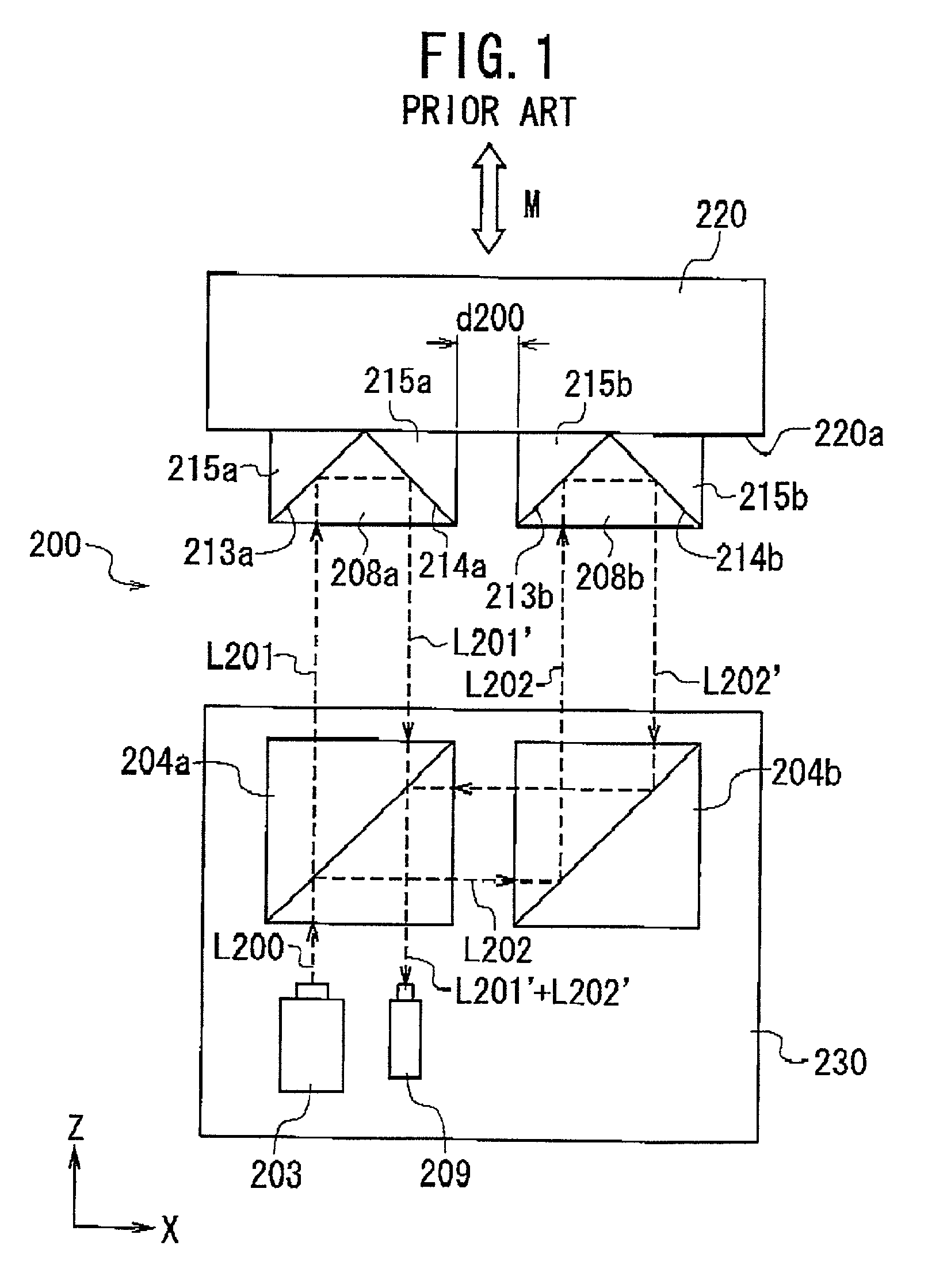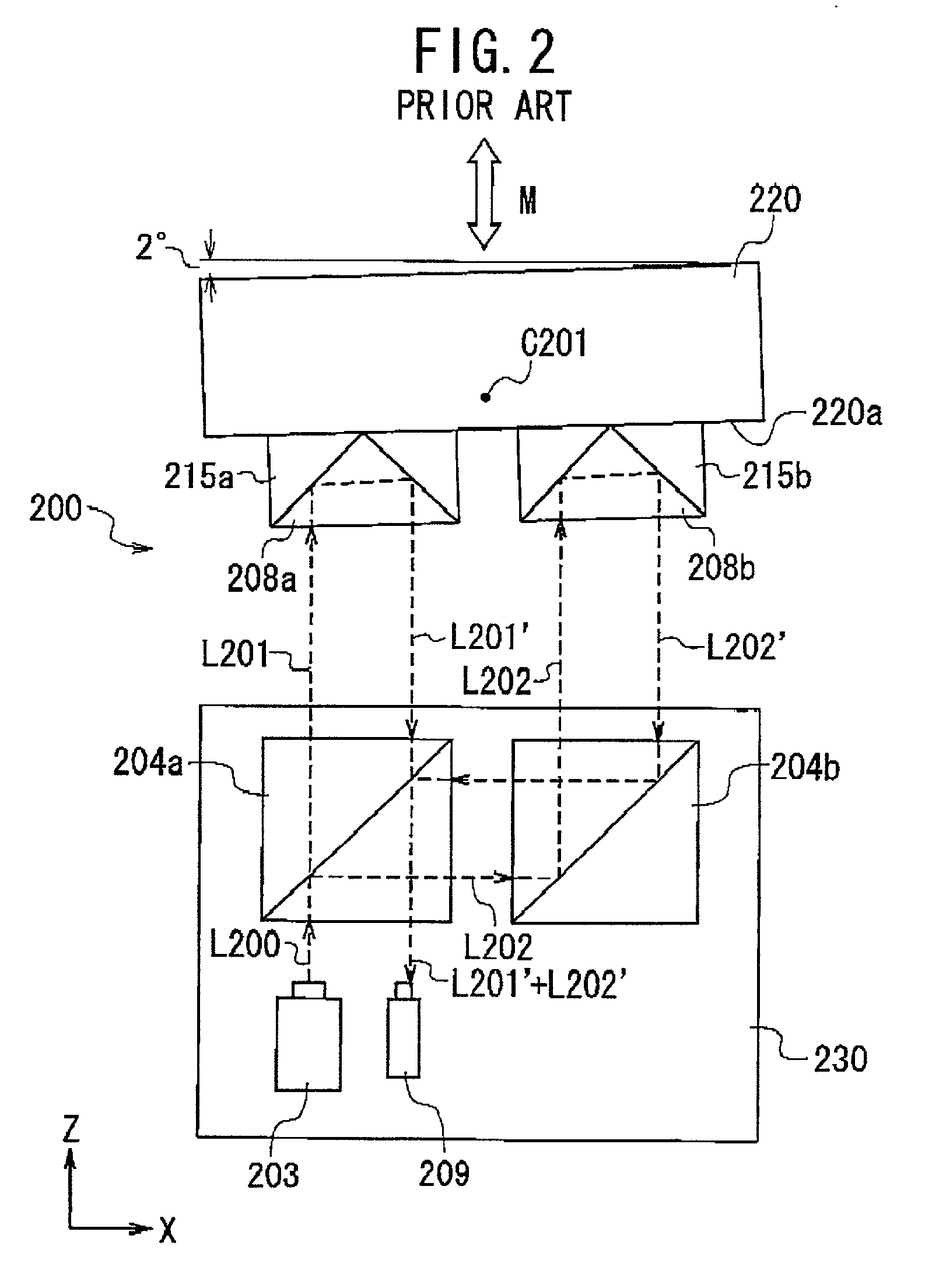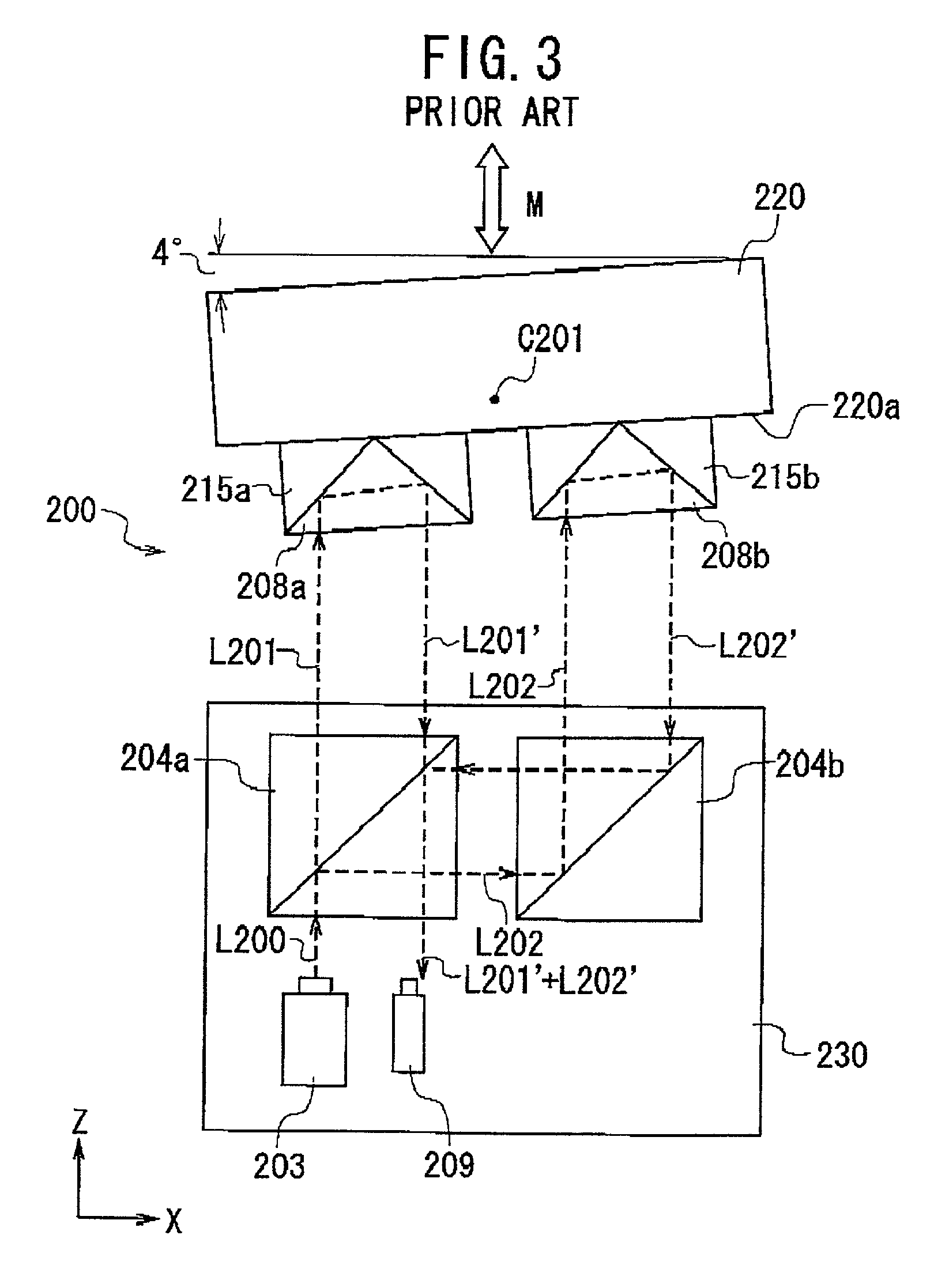Laser measuring device and laser measuring method
- Summary
- Abstract
- Description
- Claims
- Application Information
AI Technical Summary
Problems solved by technology
Method used
Image
Examples
first embodiment
[0165] A laser measuring device according to the invention has a configuration as shown in FIG. 6.
[0166] As shown in FIG. 6, the laser measuring device 100 according to the first embodiment comprises a laser source 3, a polarized beam splitter 4, two quarter-wave plates 7a and 7b, a mirror 5, a mirror 1, two corner cube prisms 8a and 8b, and an optical detector or receiver 9.
[0167] The laser source 3 generates an initial laser beam. The polarized beam splitter 4 allows the horizontally polarized component of an incident light beam to pass through and at the same time, reflects the vertically polarized component of the same incident beam in a direction perpendicular to its incident direction. Each of the quarter-wave plates 7a and 7b converts a linearly polarized light beam to a circularly polarized light bear, and vice versa. each of the corner cube prisms 8a and 8b reflects an incident light beam in a direction parallel to its incident direction. The optical receiver or detector 9 ...
second embodiment
[0206] A laser measuring device according to a second embodiment of the invention has a configuration as shown in FIG. 11.
[0207] As seen from FIG. 11, the laser measuring device 100' according to the second embodiment is substantially the same in configuration as the laser measuring device according to the first embodiment of FIG. 6, except that rhe elements or parts mounted on the top surface 30a of the table 30 in the laser measuring device according to the first embodiment are rotated around an axis perpendicular to the target surface 20a of the object 20. This is to measure the pitching angle of the object 20, instead of the yawing angle thereof. Therefore, the explanation about the same configuration is omitted here for the sake of simplification by attaching the same reference symbols as used in the first embodiment to the same elements in FIG. 11.
[0208] In the laser measuring device 100' according to the second embodiment, the laser source 3, the polarized beam splitter 4, th...
third embodiment
[0211] FIG. 12 shows a laser measuring device 100A according to a third embodiment ot the invention, which comprises a displacement error measuring section 50 for measuring the yawing angle of the object 20 and a displacement measuring section 51 for measuring the displacement (i.e.r moving distance) of the object 20.
[0212] The displacement error measuring section 50 is the same in configuration as the laser measuring device 100 according to the first embodiment of FIG. 6, except that a half mirror 22 is additionally provided to form two laser beams L01 and L02 from the initial laser beam L0 emitted from the laser source 3. Therefore, the explanation about the same configuration is omitted here for the sake of simplification by attaching the same reference symbols as used in the first embodiment to the same elements in FIG. 12.
[0213] The half mirror 22 is located on the top surface 30a of the table 30 between the laser source 3 and the polarized beam splitter 4. The mirror 22 is on ...
PUM
 Login to View More
Login to View More Abstract
Description
Claims
Application Information
 Login to View More
Login to View More - R&D
- Intellectual Property
- Life Sciences
- Materials
- Tech Scout
- Unparalleled Data Quality
- Higher Quality Content
- 60% Fewer Hallucinations
Browse by: Latest US Patents, China's latest patents, Technical Efficacy Thesaurus, Application Domain, Technology Topic, Popular Technical Reports.
© 2025 PatSnap. All rights reserved.Legal|Privacy policy|Modern Slavery Act Transparency Statement|Sitemap|About US| Contact US: help@patsnap.com



